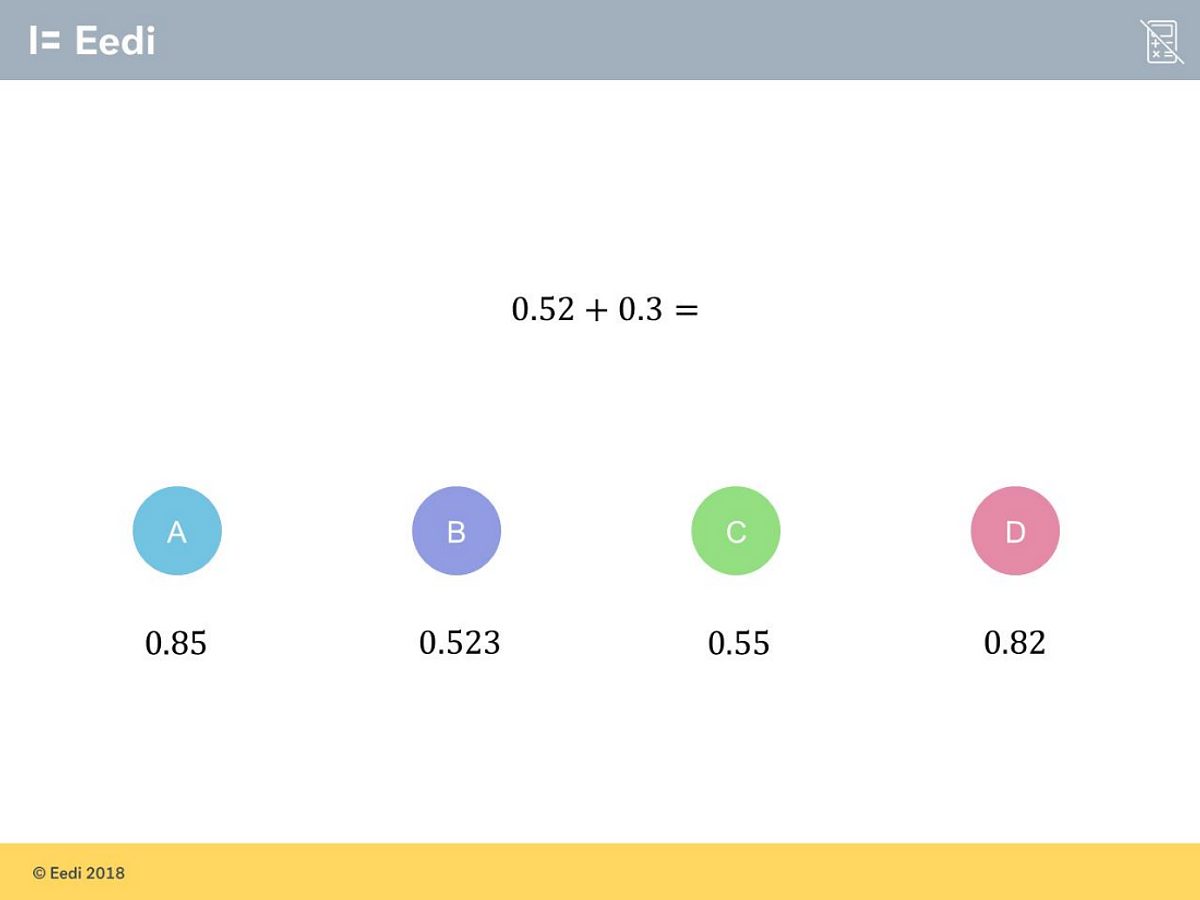This year’s return to school is unlike any other, with partial Covid-19 school closures meaning that most pupils have had limited access to face-to-face mathematics teaching since March, writes the EEF’s Maths specialist, Simon Cox, a teacher and Director of Blackpool Research School. Addressing the resulting gaps and mathematical misconceptions might seem a daunting task. Here are three practical approaches, underpinned by evidence, that could help…
Misconceptions and gaps in knowledge are nothing new to mathematics teachers , so it’s worth exploring the existing evidence around ways to tackle them. We need to be clear that mathematical misconception is an understanding that leads to a ‘systematic pattern of errors’, often resulting from application of accurate knowledge outside of the context in which it is useful.
In an unusual year, we can fairly anticipate that being out of the classroom has seen more misconceptions develop
A good example of this is the misconception that ‘multiplication makes bigger’. When children first encounter multiplication, they deal – quite rightly – only with positive, whole numbers. This, often subconsciously, leads to the formation of a ‘rule’ which they won’t see broken for several years. But by then the damage has been done – the misconception is well and truly embedded.
Misconceptions are a recurrent theme in EEF’s ‘Improving Mathematics in Key Stages 2 and 3’ guidance report. Among the report’s suggestions are that teachers should:
- Not only address misconceptions but also understand why pupils may persist with errors
- Understand common misconceptions and use this understanding to plan lessons and address errors before they arise
So, what practical approaches can teachers use to translate this evidence into classroom-based methods for confronting pupil misconceptions head on?
First, we should try to avoid language which may be problematic later on. We should actively discourage pupils from doing so, too
I frequently hear “But Mr Smith told us last year that two negatives make a positive.” Challenging such misconceptions can be difficult when pupils are ready and willing to defend them vigorously!
Now, I know for a fact that Mr Smith said no such thing, but there is a ‘partial truth’ hiding in here that the pupil has then developed into their own rule, applying it incorrectly. A better approach is to uncover and address this from the start, explain why it is problematic, then develop a department strategy for how to overcome it: “I sometimes hear pupils say that ‘two negatives make a positive’. This is unhelpful, this is why, and this is what we do instead…”
Other examples of common misconceptions include “angles on a straight line add up to 180 degrees”and “a rectangle has two pairs of equal sides” – and there are countless others. Using examples and non-examples when introducing new language and definitions is one way to tackle this.

Guidance Reports
Improving Mathematics in the Early Years and Key Stage 1
Secondly, maths leaders should support collaboration of teachers in their team to develop an understanding of the misconceptions that are likely to arise, and why
One way is using topic-by-topic sessions scheduled throughout the year, or through creative use of existing meeting time
This blog from Durrington Research School describes their fortnightly ‘Subject planning and development sessions’. Their teams discuss the question, “What are we teaching over the next fortnight and how can we teach it well?” This includes likely misconceptions and agreed strategies to address them
It is simple yet potentially very powerful, especially for less-experienced teachers.
Thirdly, we should think carefully about the questions we ask in lessons and how useful they are in helping us to identify pupil misconceptions
One of the most effective question types for this is multiple choice questions. Carefully designed, with the incorrect options (the distractors) carefully chosen to uncover common misconceptions, these can be a powerful diagnostic tool as well as an effective prompt for classroom discussions: “Why do you think someone might think the answer is B? Discuss in pairs.”
Multiple choice questions can be time-consuming and challenging to write, but they can be re-used year after year and can lead to rich mathematical discussion – which is where so many misconceptions and errors are met and addressed. There are also some excellent online sources of questions, such as Craig Barton’s Diagnostic Questions site.

A common theme running through these strategies is time for teachers to collaborate, either through informal discussions or a more formalised approach. In an ideal world, this would be part of a whole-school plan, with senior leaders providing regular time for teams to work together. But schools face many time pressures and this is not always possible, so creative use of meeting time – shifting administrative tasks to email to allow a subject knowledge and pedagogy focus – might be the next best option
In an unusual year, we can fairly anticipate that being out of the classroom has seen more misconceptions develop, and so taking time to plan, assess, teach and recalibrate the curriculum is required. This needs to be collaborative – with the time, tools and talk between colleagues to ensure it is done well.
___
The EEF will be publishing a series of short guides for teachers looking to explore aspects of our Improving Mathematics in Key Stages 2 and 3 guidance report later this year, including one on misconceptions. These will feature discussion prompts, school case studies, and common myths.
